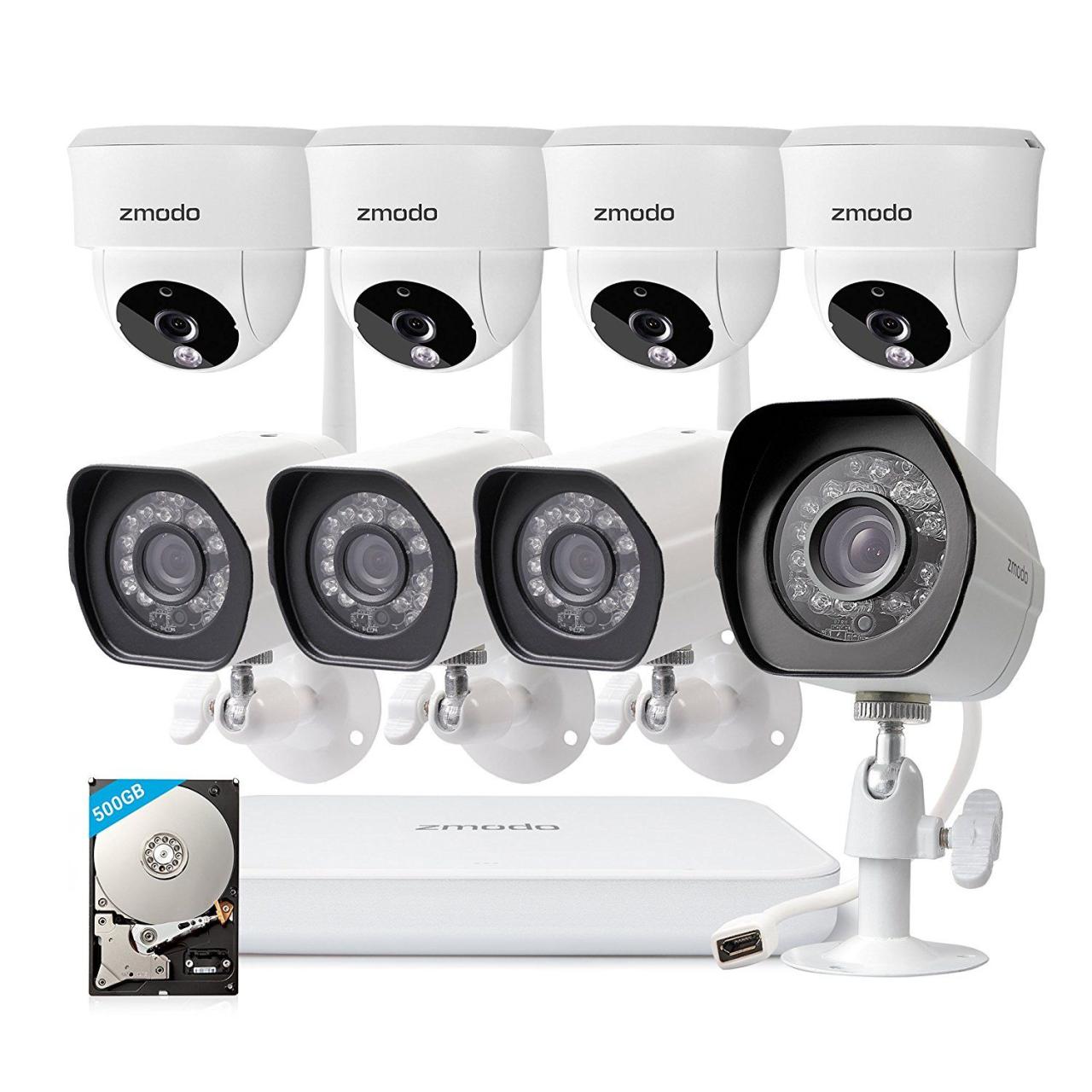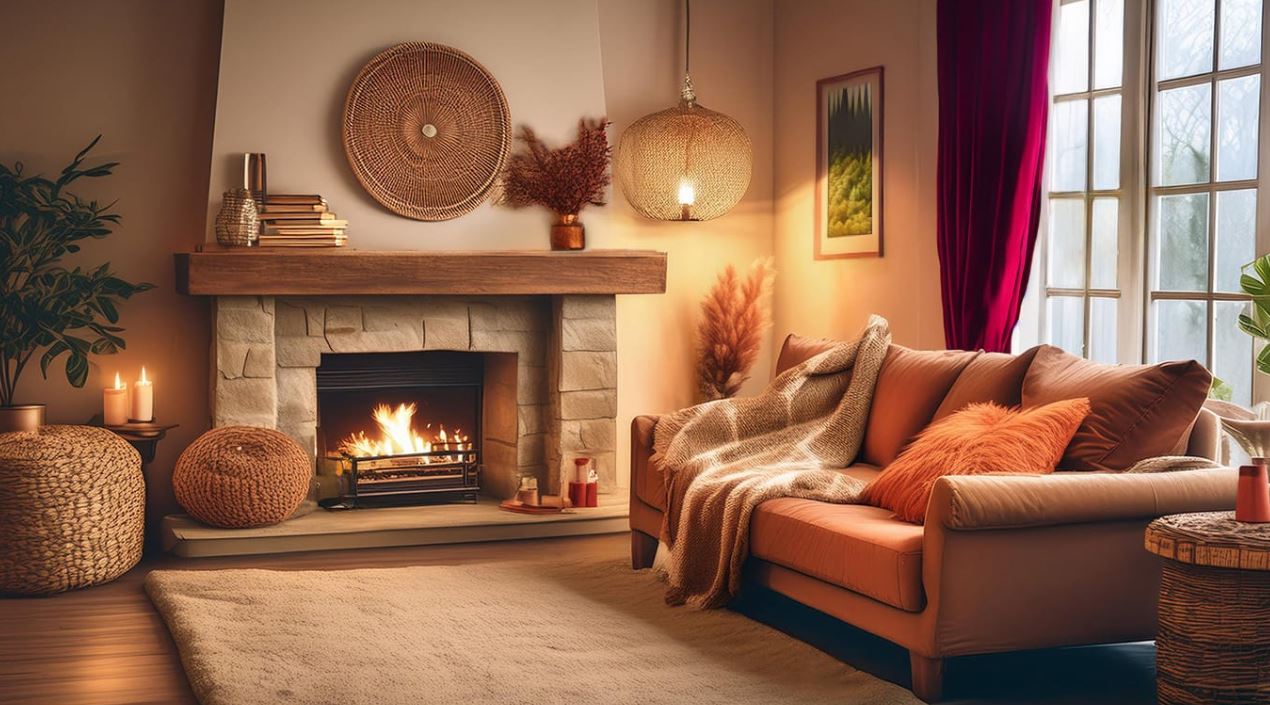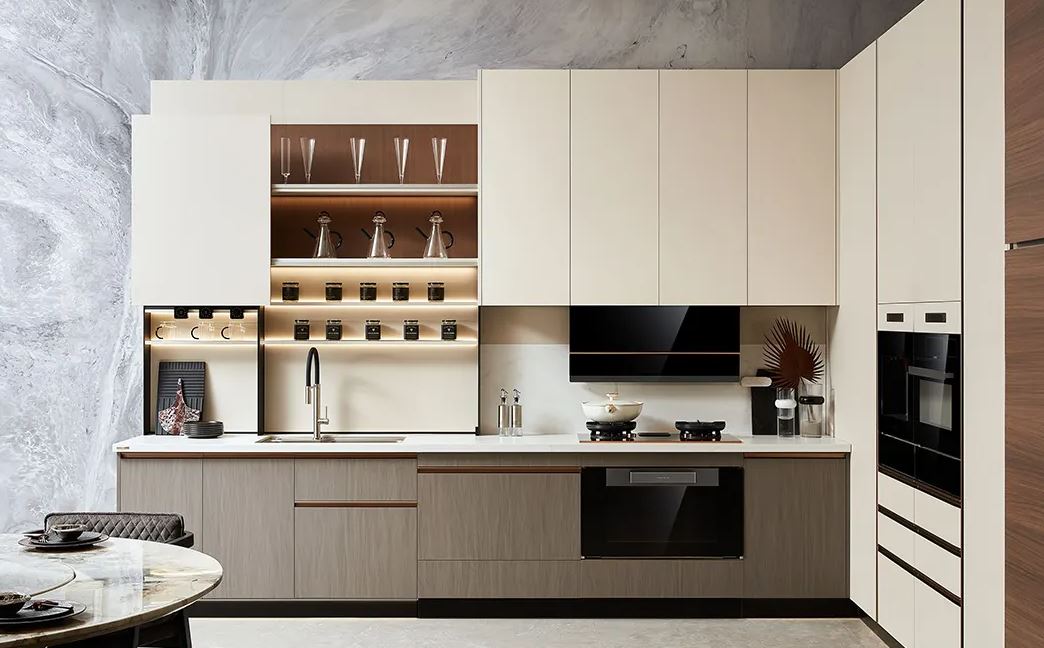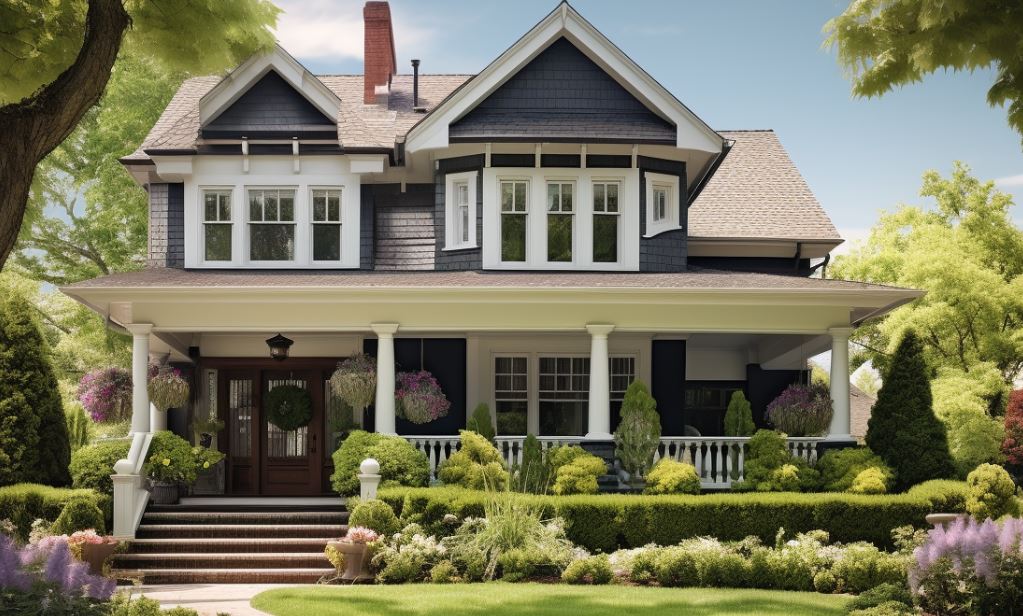Smart home security systems that complement interior aesthetics are no longer an afterthought but a crucial design element. This exploration delves into the seamless integration of advanced security technology with diverse home styles, showcasing how functionality and beauty can coexist harmoniously. We’ll examine various system types, camouflage techniques, innovative design solutions, and the crucial role of lighting and user interface design in creating a secure and aesthetically pleasing living space.
The aim is to equip homeowners with the knowledge to choose systems that enhance, rather than detract from, their home’s unique character.
From minimalist modern designs to traditional or rustic aesthetics, we’ll cover how different finishes, such as matte black, brushed nickel, or crisp white, can subtly blend security technology into the overall ambiance. We’ll also explore clever concealment methods, including integrating cameras into everyday objects and using neutral color palettes to minimize visual disruption. The discussion will further examine how smart lighting and intuitive app designs contribute to a holistic and user-friendly security experience.
Types of Smart Home Security Systems & Aesthetic Integration
Smart home security systems are no longer just functional; they’re integral design elements. Choosing a system that seamlessly integrates with your home’s aesthetic is crucial for a cohesive and stylish living space. This discussion explores various system types and how their design can enhance different interior styles.
System Types and Aesthetic Compatibility
Five distinct types of smart home security systems offer diverse aesthetic options: wired systems, wireless systems, DIY systems, professionally monitored systems, and integrated systems. Their design elements can be carefully selected to complement various interior design styles, from minimalist to rustic.
Wired Systems: These offer robust security but can be less aesthetically pleasing due to visible wiring. However, discreet placement and cable management can minimize their visual impact. For example, in a traditional home, running wires along baseboards can be effectively hidden, maintaining the home’s character. In modern homes, sleek, white wiring can be integrated into architectural features, minimizing visual disruption.
Wireless Systems: These offer greater flexibility in placement and installation. Components like cameras and sensors are typically smaller and more easily concealed, making them suitable for any interior design style. A minimalist home could benefit from small, unobtrusive white sensors, while a rustic home could use dark wood-finished cameras that blend with the surroundings.
DIY Systems: Offering affordability and customization, DIY systems allow users to select components that match their aesthetic preferences. This is ideal for those with specific design sensibilities. A matte black camera could be a stylish addition to a modern industrial setting, while a brushed nickel keypad could fit seamlessly into a contemporary kitchen.
Professionally Monitored Systems: These systems prioritize security and often include more substantial control panels. The design of these panels varies widely, allowing for integration into different aesthetics. A slim, sleek panel can blend seamlessly into a modern environment, while a more traditional-looking panel could complement a classic or Victorian style home.
Integrated Systems: These combine security features with other smart home technologies, often involving central hubs and control interfaces that can be customized aesthetically. For example, a minimalist home might benefit from a sleek, touchscreen control panel integrated into a wall, while a traditional home might opt for a more discreet, smaller control unit that is placed on a shelf.
Finish Options and Aesthetic Enhancement
Different finishes significantly impact the aesthetic appeal of smart home security systems. Matte black, brushed nickel, and white are popular choices that complement diverse styles.
Matte Black: This finish provides a sophisticated and modern look, suitable for minimalist, industrial, and contemporary styles. It offers a sleek contrast against lighter walls and complements dark wood or metal accents.
Brushed Nickel: Offering a classic and elegant appeal, brushed nickel works well in traditional, transitional, and contemporary settings. Its subtle sheen complements various color palettes and materials.
White: A versatile and clean finish, white seamlessly blends into various styles, particularly minimalist and Scandinavian designs. It creates a sense of openness and avoids visual clutter.
Aesthetic Compatibility of Security System Components
The following table illustrates how different security system components aesthetically integrate with popular interior design styles.
| Component | Minimalist | Modern | Traditional |
|---|---|---|---|
| Cameras | Small, white, discreetly placed | Sleek, matte black, or brushed nickel | Subtle, possibly disguised as part of architectural detail |
| Sensors | Small, white, unobtrusive | Sleek, metallic finishes | Wood-toned or painted to match trim |
| Control Panels | Sleek, touchscreen, wall-mounted | Modern design, possibly with customizable color schemes | More traditional design, potentially housed in a decorative enclosure |
Camouflage and Concealment Techniques

Source: pinimg.com
Seamlessly integrating smart home security systems into your interior design is crucial for maintaining both safety and aesthetic appeal. Clever concealment techniques allow for effective security without compromising your home’s style. This involves strategically placing devices and using design elements to minimize their visual impact.Effective camouflage hinges on blending security devices with their surroundings. This can be achieved through a variety of methods, from selecting devices in neutral colors that match your existing décor to creatively integrating them into everyday objects.
The goal is to make these security components practically invisible to the casual observer, yet readily accessible and functional when needed.
Concealing Cameras and Sensors within Everyday Objects
Disguising security cameras and sensors within everyday objects is a highly effective camouflage technique. For example, a seemingly innocuous book on a shelf could house a hidden camera, its lens subtly integrated into the spine or cover. Similarly, a smoke detector could incorporate a camera, blending seamlessly into the ceiling. A cleverly designed clock or a picture frame could also conceal cameras, maintaining the overall aesthetic of the room while providing discreet surveillance.
The key is to choose objects that logically fit within the space and aren’t likely to attract undue attention.
Utilizing Neutral Colors and Minimalist Designs
Neutral colors and minimalist designs are invaluable tools in the pursuit of unobtrusive security. Security cameras and sensors designed in muted tones like white, black, or grey can easily blend into walls or furniture. Minimalist designs, characterized by clean lines and a lack of excessive ornamentation, further reduce the visual impact of these devices. The aim is to create a cohesive look where the security system fades into the background, rather than standing out as a separate entity.
Consider using devices with matte finishes to further minimize reflections and enhance their camouflage effect.
Concealment Scenarios in Different Rooms
The following scenarios illustrate how to effectively conceal security systems in various rooms while maintaining functionality.
Living Room Concealment
In a living room, a discreetly placed camera within a decorative plant pot can provide excellent surveillance without compromising the room’s ambiance. The pot should be of a size and style that complements the existing décor, and the camera should be carefully positioned to capture a wide view of the main living area. The camera’s lens could be subtly integrated into the pot’s drainage hole or even concealed behind a strategically placed leaf.
The neutral color of the pot will further enhance its inconspicuous nature.
Bedroom Concealment
In a bedroom, a motion sensor disguised as a bedside lamp provides both security and convenience. A sleek, minimalist lamp design, in a neutral color like white or grey, would seamlessly integrate into the bedroom’s decor. The motion sensor could be integrated into the lamp’s base, allowing for unobtrusive monitoring of movement in the room. The lamp’s functionality remains unchanged, providing both light and security.
Kitchen Concealment
A security camera cleverly integrated into a kitchen cabinet’s pull handle could provide discreet monitoring of this high-traffic area. The camera’s lens could be positioned to look out from within the handle, its presence virtually undetectable to the untrained eye. This strategy ensures that the security system remains functional while maintaining the overall aesthetic appeal of the kitchen. The choice of handle material and finish should be consistent with the existing kitchen cabinetry.
Smart Home Security System Features and Design Choices: Smart Home Security Systems That Complement Interior Aesthetics
The aesthetic integration of a smart home security system is paramount; it shouldn’t clash with your carefully curated interior. Choosing a system that seamlessly blends into your home environment enhances both security and the overall living experience. This section will explore key features impacting aesthetic integration, compare design aesthetics of leading brands, and showcase innovative design solutions that prioritize both form and function.
Three key features significantly influence the aesthetic integration of smart home security systems. These features, when thoughtfully considered, can transform a potentially intrusive security system into a stylish and unobtrusive element of your home décor.
Key Features Impacting Aesthetic Integration
- Discreet Camera Design: Modern smart home security cameras are moving beyond bulky, overtly “security-camera” designs. Many manufacturers now offer cameras disguised as everyday objects, such as smoke detectors, picture frames, or even innocuous wall sconces. This allows for seamless integration into existing décor, minimizing visual disruption. The functionality remains unchanged – high-definition video recording, motion detection, and remote access – but the appearance is significantly more refined.
- Wireless Connectivity and Minimalist Hardware: The prevalence of wireless technology drastically improves aesthetic integration. Eliminating the need for visible wires and bulky control panels contributes to a cleaner, more modern look. Smaller, more minimalist sensors and cameras blend seamlessly into various settings, avoiding the cluttered appearance often associated with older security systems. This streamlined approach enhances the overall aesthetic appeal of the home environment.
- Customizable App Interface and Control Options: A well-designed app interface can enhance the user experience and contribute to the overall aesthetic harmony. Systems with customizable dashboards, color schemes, and widget sizes allow users to tailor the app to their personal preferences, maintaining consistency with their smart home’s overall design language. The ability to control the system through voice assistants or smart home hubs further reduces the need for conspicuous physical controls.
Comparison of Design Aesthetics: Two Leading Brands
Comparing the design aesthetics of two prominent smart home security brands provides a valuable insight into the diversity of approaches to aesthetic integration.
- Brand A (e.g., Ring): Often characterized by a more utilitarian design language. Their devices tend to be functional and straightforward, prioritizing ease of use and affordability. While not always prioritizing minimalist aesthetics, they are generally unobtrusive and available in a range of colors to blend with different environments. Their app interface is generally straightforward and easy to navigate.
- Brand B (e.g., Nest): Known for its sleek, modern, and minimalist designs. Nest devices are often praised for their premium materials and sophisticated aesthetic appeal. Their focus is on integrating seamlessly into contemporary homes, with a color palette often limited to white or black to maintain a consistent and clean look. The Nest app interface tends to be more visually sophisticated, prioritizing intuitive design and visual clarity.
Innovative Design Solutions Enhancing Functionality and Aesthetics
Several innovative design solutions are pushing the boundaries of both functionality and aesthetics in smart home security systems.
- Camouflaged Security Cameras: Cameras integrated into seemingly innocuous objects, such as potted plants, books, or clocks, offer superior concealment while maintaining full functionality. This level of integration minimizes the visual impact of the security system, making it virtually invisible to casual observation.
- Modular and Customizable Sensor Systems: Modular systems allow users to select and arrange sensors according to their specific needs and home layout. This flexibility enhances both functionality and aesthetic integration, as users can choose the sensors that best suit their décor and placement preferences. It avoids the cluttered appearance that a pre-packaged system might impose.
- Smart Doorbell with Integrated Lighting: Combining a smart doorbell with integrated lighting adds both security and aesthetic value. The doorbell’s design can be seamlessly integrated into the home’s exterior, while the lighting feature provides added visibility and deterrence at night, improving safety and enhancing the curb appeal.
Impact of Lighting and Ambient Design
Smart lighting systems are no longer just about convenience; they’re integral to a comprehensive smart home security strategy. By seamlessly integrating with security systems, they enhance both the security and aesthetic appeal of a home, creating a holistic and stylish approach to protection. The interplay between lighting, ambiance, and security features elevates the home environment while simultaneously bolstering its defenses.The integration of smart lighting and security systems offers a multi-layered approach to home protection.
Smart lighting can significantly improve the perception of security, deterring potential intruders through the strategic use of illumination. Simultaneously, the carefully chosen ambient lighting enhances the overall atmosphere of the home, creating a welcoming and secure environment for residents. This integration isn’t merely about adding security features; it’s about enhancing the living experience.
Smart Lighting Integration with Security Systems, Smart home security systems that complement interior aesthetics
Smart lighting systems can be programmed to respond to various security events detected by the smart home security system. For instance, when a motion sensor detects movement outside the home after dark, exterior lights can automatically switch on, illuminating the area and potentially deterring intruders. Simultaneously, interior lights might subtly change color or intensity, alerting residents to the activity without causing alarm.
This proactive response adds a layer of security beyond simple alerts. Imagine a scenario where a security camera detects unusual activity near the back door. The system could immediately activate a bright, white light in that area, startling any potential intruder while simultaneously sending a notification to the homeowner’s smartphone. This coordinated response significantly increases the effectiveness of the security system.
Ambient Lighting and Enhanced Security Perception
Ambient lighting plays a crucial role in creating a sense of security and comfort within a home. Well-lit spaces, especially entrances and walkways, are less appealing targets for burglars. Smart lighting systems can automate this, ensuring key areas are illuminated at night, creating a perception of occupancy even when the home is empty. Furthermore, the use of warm, inviting lighting throughout the home can contribute to a feeling of safety and well-being, counteracting the potentially sterile or cold feeling associated with some security systems.
A well-designed system might use soft, dimmable lights in hallways at night, while brighter lights automatically illuminate in response to motion detection. This approach balances security with ambiance, making the home feel both safe and comfortable.
Smart Lighting as a Visual Alert System
Smart lighting systems can be programmed to act as a visually noticeable alert system, supplementing traditional audible or text-based notifications. In the event of a security breach, lights can flash or change color, providing an immediate visual cue to residents. This visual alert can be particularly helpful for individuals with hearing impairments or in situations where audible alarms might be overlooked.
For example, if a window sensor triggers an alarm, the lights in that room could rapidly flash red, while other lights in the house might pulse a softer amber, indicating an alert but avoiding a panic-inducing response. The system could be customized to use different color patterns and flashing frequencies for different types of security events, allowing for a more nuanced response.
User Interface and App Design Considerations
The user interface (UI) and app design of a smart home security system are crucial for both its functionality and aesthetic appeal. A well-designed app not only enhances the user experience but also contributes to the overall perception of the system’s sophistication and integration within the home’s design. A poorly designed app, conversely, can create frustration and undermine the sense of security it aims to provide.
The visual language of the app should seamlessly blend with the overall aesthetic of the smart home, ensuring a cohesive and pleasing user experience.A visually appealing and intuitive app interface is vital for user engagement and effective system management. Intuitive navigation, clear visual cues, and a consistent design language contribute significantly to the user’s perception of the system’s reliability and effectiveness.
Users should be able to quickly and easily access all necessary features, understand the system’s status, and respond to alerts without feeling overwhelmed or confused. The app should be as aesthetically pleasing as the hardware itself, enhancing the overall user satisfaction and reflecting the investment made in home security.
Examples of User-Friendly Interfaces
Several successful smart home security systems exemplify user-friendly interfaces that balance functionality and visual appeal. For instance, consider the simplicity of the Ring app, with its clear camera feeds, easily accessible controls, and straightforward notification system. Alternatively, SimpliSafe’s app emphasizes a clean, minimalist design that prioritizes ease of use and quick access to key functions. These apps showcase how a well-planned interface can enhance both the user experience and the overall aesthetic impression of the security system.
They achieve this through careful consideration of color palettes, typography, and iconography, creating a cohesive and visually pleasing experience.
Mock-up Description of a Smart Home Security System App Interface
Imagine a smart home security app interface dominated by a calming, neutral color palette – perhaps soft greys and muted blues – to create a sense of calm and security. The typography would utilize a clean, modern sans-serif font for readability and a sense of sophistication. Icons would be minimalist and easily recognizable, employing a consistent style throughout the app.
The main screen would display a clear, high-resolution overview of all active cameras, showing live feeds in a grid layout. Each camera feed would be labeled clearly with its location (e.g., “Front Door,” “Backyard”). The screen would also display the overall system status (e.g., “Armed,” “Disarmed”) prominently, with a large, easily accessible button to change the system’s status.
A notification center would be readily available, displaying alerts and events in a chronologically ordered list, using color-coded icons to indicate the severity of each event (e.g., green for low-priority events, yellow for moderate, red for high-priority emergencies). Subsequent screens would provide access to more detailed settings, including device management, user profiles, and alarm history. This thoughtful design prioritizes both visual appeal and intuitive functionality, creating a user experience that is both aesthetically pleasing and highly effective.
Outcome Summary
Ultimately, achieving a secure home shouldn’t compromise style. By thoughtfully considering the aesthetic integration of smart home security systems, homeowners can create spaces that are both safe and visually appealing. The key lies in understanding the available options, leveraging camouflage and concealment techniques, and prioritizing design elements that harmonize technology with individual tastes. With careful planning and selection, the security system can become an unobtrusive yet integral part of the home’s overall design, enhancing both its functionality and beauty.
Detailed FAQs
What are the typical installation costs for these systems?
Installation costs vary widely depending on the system’s complexity, the number of devices, and professional installation fees. Expect a range from a few hundred to several thousand dollars.
How much ongoing maintenance is required?
Maintenance is generally minimal. Regular software updates are crucial, and occasional checks of sensors and cameras for proper functionality are recommended.
What happens if the internet goes down?
Most systems have backup power and some level of offline functionality, though features may be limited. The specific capabilities vary between brands and models.
Are these systems compatible with other smart home devices?
Many smart home security systems offer integration with other smart home devices and platforms, such as smart lighting, thermostats, and voice assistants, enhancing overall home automation.
What level of technical expertise is needed to operate these systems?
Most systems are designed for user-friendliness. While some technical understanding might be helpful, the intuitive interfaces and mobile apps make them accessible to most users.
- High-performance glass A detailed look - June 2, 2025
- Coastal Modern House A Guide - May 6, 2025
- Floral Centerpieces A Complete Guide - April 20, 2025









